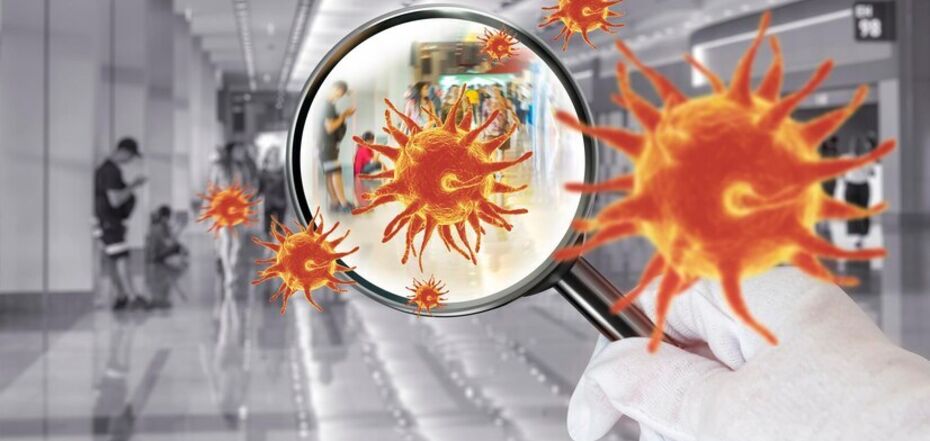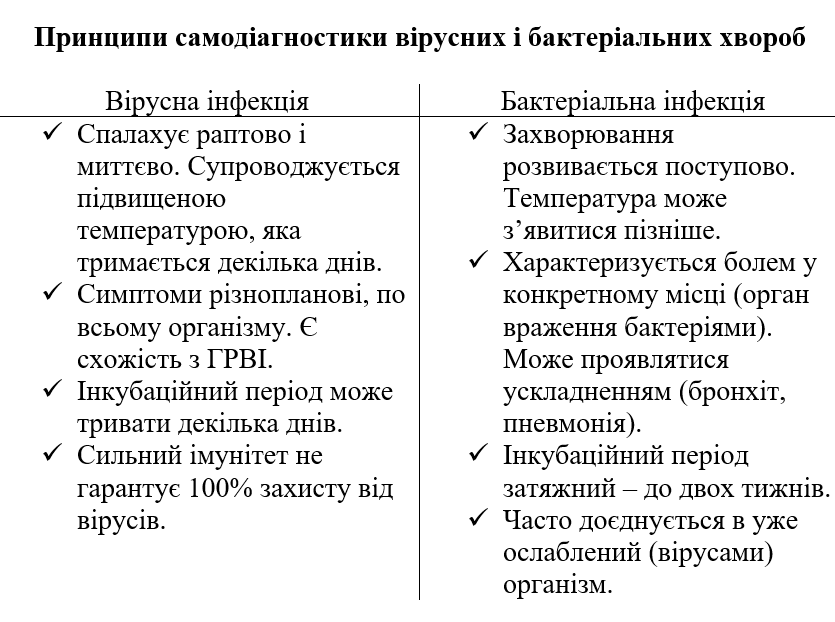News
The difference between viral and bacterial infections
Why is it important to distinguish between viral and bacterial diseases? It's not just a matter of whether antibiotics are appropriate. By identifying the source of the disease, you can choose the right treatment and avoid complications.
Viruses and bacteria lurk everywhere: in kindergarten, school, shop, gym, clinic, home; on the handles of supermarket baskets, public transport and restrooms, banknotes, office supplies, cafe tables, ATM monitors, kitchen sponges, towels, etc. They can cause many infections, especially respiratory infections, which children tend to get in the autumn-winter period. Sometimes the symptoms of viral and bacterial infections have similar signs. At the same time, the difference between them lies in the mechanism of influence on the child's body, methods of diagnosis, and treatment.
Viruses and their features
Viruses are microorganisms that do not have a cellular structure and can multiply only inside living cells. They do not grow, multiply, or develop, in short, they do not live in the environment. They need living organisms (humans, animals, plants) for self-reproduction – by penetrating a cell, the virus uses its resources for its activities, including reproduction. They are simpler and smaller in structure than bacteria.
Some viruses can mutate (e.g., influenza), which makes it difficult to fight them. Antibiotics do not affect viruses because they do not have "targets" that the drugs act on.
Diseases caused by viruses:
HIV, chickenpox, influenza, parainfluenza, SARS, colds, respiratory syncytial infection, measles, bocavirus infection, rubella, mononucleosis, coronavirus, hepatitis, herpes, rotavirus infection, polio, rabies, etc.
What are bacteria and how do they infect?
Bacteria are living unicellular organisms that are adapted to survive in difficult conditions (high or low temperatures, ultraviolet light, caustic or acidic environments). They can provide all stages of life on their own. The main way bacteria enter the human body is through airborne droplets. Once inside the body, harmful bacteria settle there, multiply, and in the process of activity release toxins – poisonous substances. This is how the disease begins.
Many (about 2 kg) bacteria live in the human intestine. Most of them are beneficial.
The most common diseases caused by bacteria are:
Tuberculosis, tonsillitis, sinusitis, pneumonia, dysentery, botulism, typhoid, cholera, diphtheria, plague, scarlet fever, tetanus, etc.
Principles of self-diagnosis of viral and bacterial diseases
Taking into account the above information, parents should never self-diagnose or self-treat their child to avoid harming the body. At the first sign of illness, the child should be taken to a doctor who will determine the exact nature of the infection and prescribe appropriate treatment.
Treatment of viral and bacterial infections
Viruses and bacteria differ in structure, so treatment will be radically different. Each pathogen has its mechanism of action. According to the protocols, only bacterial infections are treated with antibiotics. This helps to quickly overcome the disease and avoid complications. There is no need to be afraid of antibiotics if they are prescribed by a doctor. Parents need to follow the dosage and intake recommendations.
In the case of a viral infection, antiviral drugs help quickly – they are very effective if you start treatment at an early stage. For a sick child, a doctor may recommend "Flavovir," a herbal antiviral drug. The drug is available in the form of a syrup with a convenient dosage, it is approved for children from birth, contains flavonoids (natural compounds that have a detrimental effect on viruses), and is suitable for long-term use (for example, for prophylaxis after contact with a sick person). Taking an antiviral medicine will help your child avoid potentially serious complications that viral diseases are "famous" for. The dosage frequency and course of treatment are determined together with the doctor.
Prevention of viral and bacterial diseases
Effective prevention against many viral and bacterial diseases will be the rules that should be taught to a child from an early age:
- wash hands and food thoroughly often;
- use disinfectants if necessary;
- avoid contact with sick people;
- observe cough and sneeze hygiene;
- not to touch the face unnecessarily.
Everything else is within the parents' power: to get the child vaccinated and not to neglect the recommended ones (pneumococcal and meningococcal infections, chickenpox, HPV, rotavirus, whooping cough, influenza, coronavirus). Create conditions for growth in a healthy environment: proper nutrition, physical activity, sleep, fresh air, and lots of positive emotions. This will make the childhood not only happy but also healthy.




























